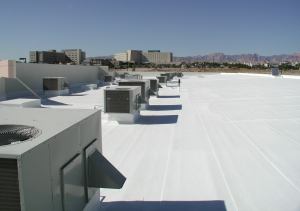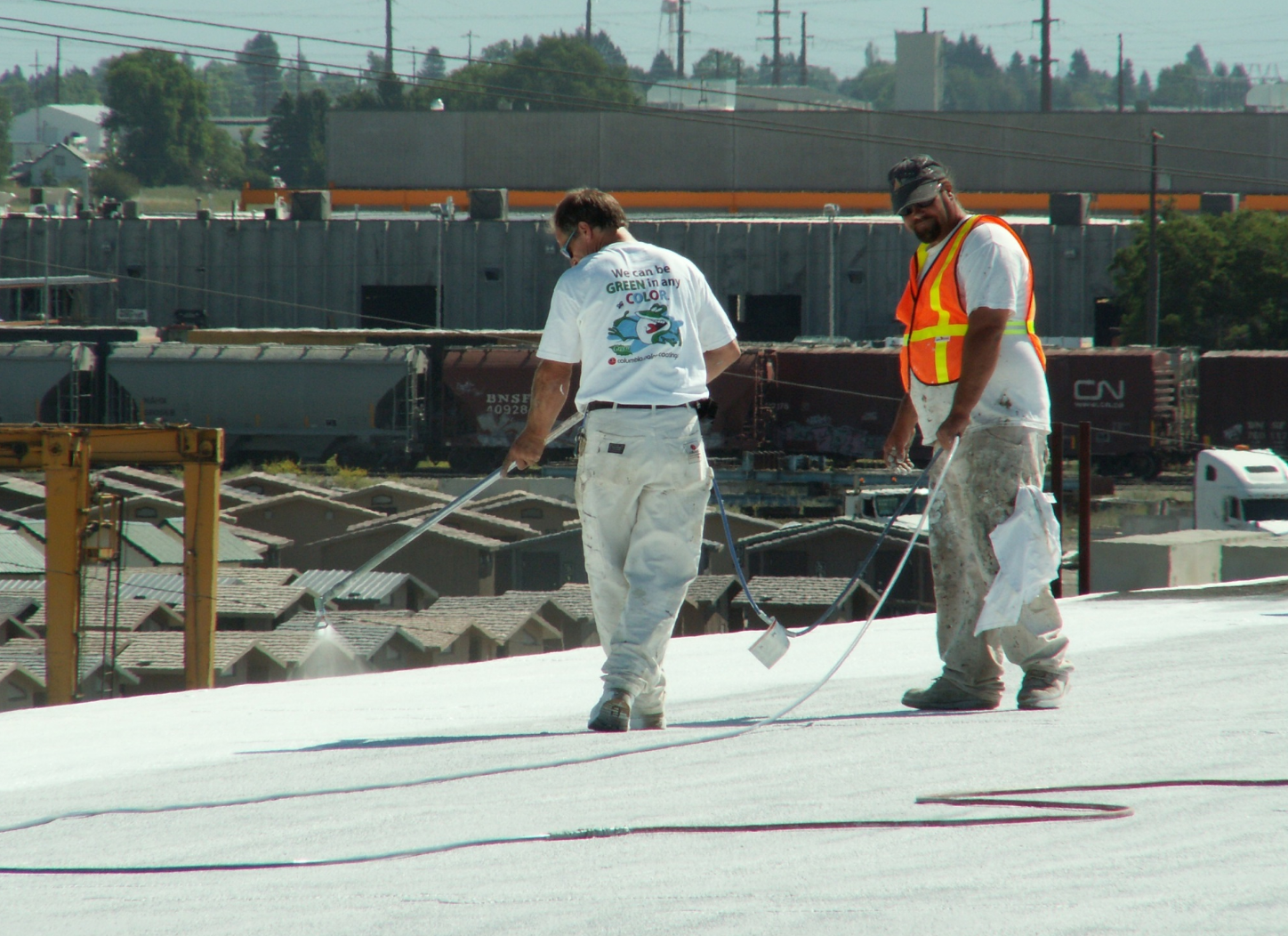Roof coatings are a fast-growing market segment in the roofing industry—and it makes good sense why that is the case. Application of a roof coating on a new or existing roof can provide
added durability, extend roof service life, save on energy costs, and avoid the hassle and expense of a full tear-off and replacement.
COATING TYPES
Roof coatings come in many formulations and are appropriate for installation over all roof system types. The first question many have is which coating is appropriate for which substrate?

A reflective coating has been applied to a hybrid asphaltic roof.
PHOTO: GAF
The most common polymer-based coatings include acrylics, polyurethanes and silicone coatings. Acrylic water-based coatings are ideal for high UV environments where a reflective roof is desired. They can be colored but generally are sold in white, tan and gray. Many specialized versions are made to be compatible with specific substrates. Polyurethane coatings are typically solvent-based and come in two main types, aromatic and aliphatic. Urethanes have good mechanical properties and high abrasion resistance. They are suggested for use in hail-prone regions or where a roof is exposed to heavy foot traffic.
Silicone coatings, like acrylic coatings, perform well in high UV environments where a reflective roof is desired. Often silicone is used in locations where rain is a daily occurrence or if the roof is often wet and experiences excessive amounts of ponded water. In addition, butyl, fluoropolymer, PMMA, polyester, STPE, SEBS and styrene-acrylics can be used to formulate roof coatings.
Coating thickness (dry film thickness) has an effect on performance. In general, thicker coatings will have increased service life and will provide additional durability regardless of coating type. Also very important is the specification written for each project. Every project is different and every specification should be tailored to every project to ensure the correct coating and application is appropriate for the roof and coating type. Coating manufacturers’ specifications should be the basis for every coating project and be coordinated with project specifications.
SUBSTRATES
Asphaltic-based coatings are most commonly used on built-up roof (BUR) and modified bitumen (MB) membranes; they are rarely, if ever, used on single-ply roof membranes. All types of polymer-based coatings are used on BUR, MB, metal and single-ply roofs. There is information to assist with the evaluation and preparation of the substrate in the ASTM standard titled, “Standard Guide for Evaluation and Preparation of Roof Membranes for Coating Application”.
From a material-quality standpoint, it is important to use products that meet or exceed their ASTM material standards, which are listed in the International Building Code and International Residential Code. Meeting the building-code requirements provides the minimum safeguards for materials used for construction.



I didn’t know how useful roof coatings could be or that there were even different types. The reflective coat sounds especially interesting as it aims to keep heat down in your home. I think it’s important to consider how managing the heat transfer in our home from the outside (like with reflective roofs or energy efficient windows) can help us improve our electrical bills and energy use. http://www.heritagepaintingandwaterproofing.com/waterproofing